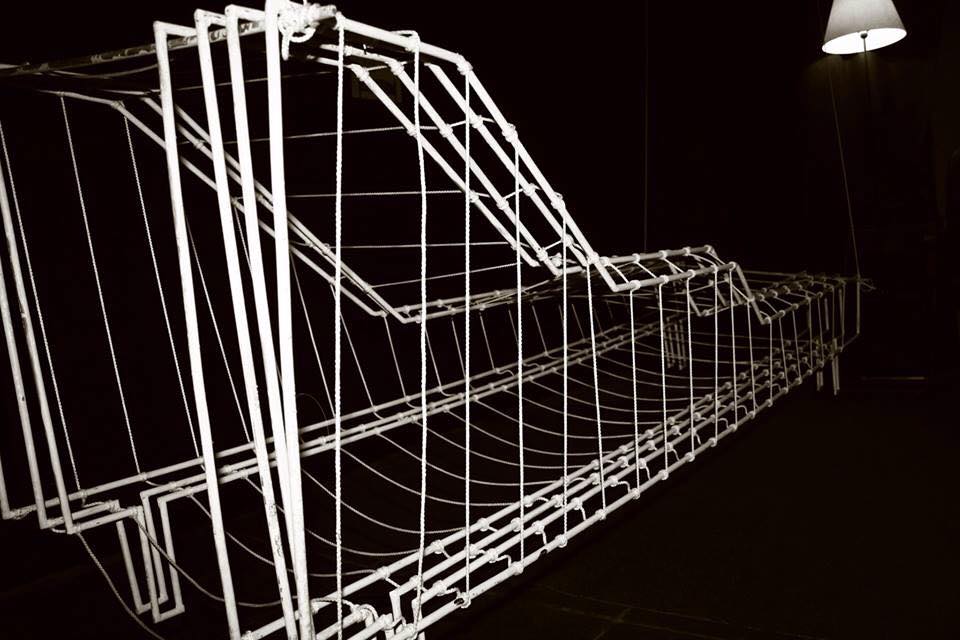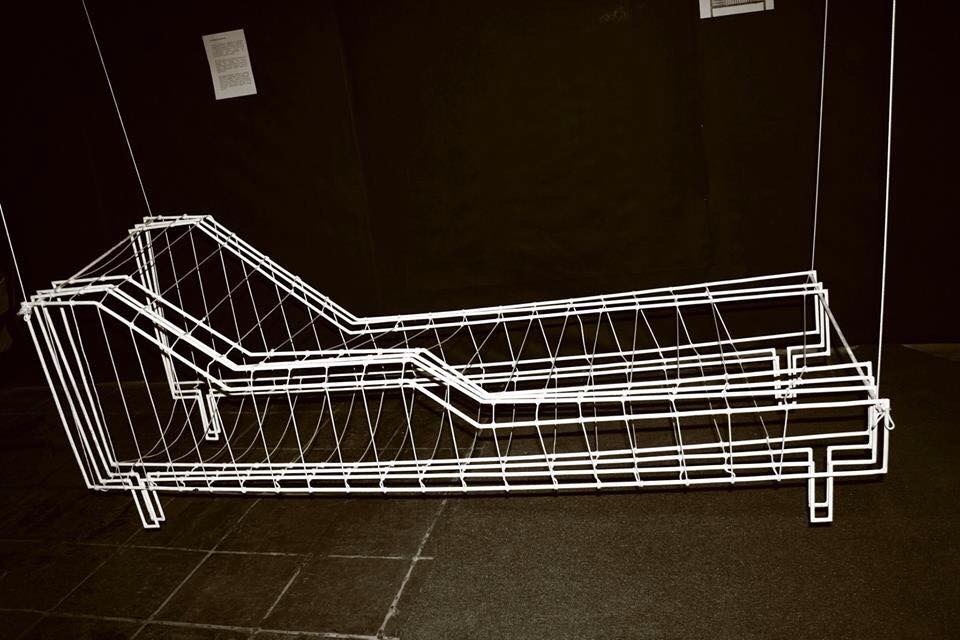Ekaterina Sisfontes - a life of an artist
Psychoanalytic Couch
Iron, wire, acrylic
Loft Project
St Peterburg, Russia
2013

A couch made of iron rods suspended from the ceiling on ropes,
a table and a chair illustrate the psychoanalyst’s office – a place where,
perhaps, it would be possible to solve the riddle of autism,
but will the autistic go to it?
made for “SURFACE” Exhibition of the educational project about Autism
Curators:
Mikhail Sobolev, New Lacanian School;
Olga Vinogradova, Moscow School of New Cinema;
Lisa Savina, AL Gallery


It’s been 70 years since, thanks to the efforts of Leo Kanner,
these people are no longer considered mentally retarded
and recognized by others as autistic.
However, the essence of autism is still not clear. None knows why it produces anxiety, fear, and rejection.
How can we understand someone who does not communicate back or uses a strange language, devoid of the usual meaning?
Is it up to us to decide what to do with them?
Should we forcibly “normalize” the autistic or must we admit that they are worthy of respect and partnership on an equal level?
The SurFace Project aims to break down stereotypes of public perception of children with autistic traits and to replace the popular idea of a patient in need of treatment or isolation, with an understanding of the person who speaks their own language requiring translation and who needs specific tools to allow him to communicate with others.
Artistic creation is a perfect tool for a person with autism.
Especially drawing, which helps to replace the lack of self-image and becomes a means of communication and a way of gaining recognition.
It is with this aim in mind that we introduce this exhibition.
A Walk-through design concept – immersing the viewer in an environment in which he should be able to feel what it is like to be slightly autistic.
Professional artists were invited to participate in the project, by using different artistic languages as a means of communication.
As well as for autistic children, for them, art is the only tool – the special channel made for direct communication with the surrounding world.
The exhibition space is divided into six zones.
Ekaterina Sisfontes, a Swedish artist, has built an installation with a psychoanalyst’s couch as a place of both help and torcher. Tigran Malkhasyan immerses the viewer in the story of an autistic person’s special relationship with mirrors, in which he cannot see his own reflection.
Tatiana Akhmetgalieva made a portrait using textiles forced through the surface of the canvas and becomes an abstract object of threads.
It raises numerous associations at different levels. The centerpiece of the exhibition consists of pictures made by autistic children, essentially replacing their creator’s ability to speak.
The exhibition features a few short films based on these pictures. The films were made by students attending the Moscow School of New Cinema.
In addition, visitors can complete real tests for the detection of Asperger’s autistic traits.
The tests are supposed to be done while sitting in the most uncomfortable position, and being distracted by various noises and kinesthetic interference
in order to recreate the way, an autistic person experiences the world.
Seminars and lectures presented by members of the World Association of Psychoanalysis in the exhibition space every week, explained the situation even better for both nonprofessionals and professional visitors.
SurFace Project is the first and so far the only project of its kind in Russia.
It conducts information and cultural education on the highest possible level.
The ever-burning need for tolerance in the area of social policy cannot be limited only to the adoption of other positions, norms, and ideals.
Lisa Savina, curator